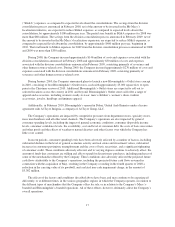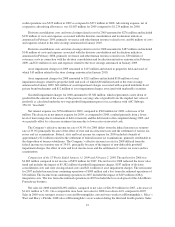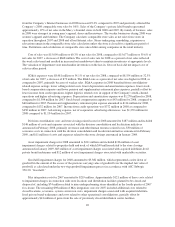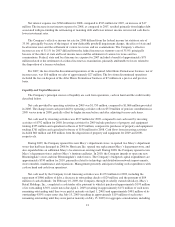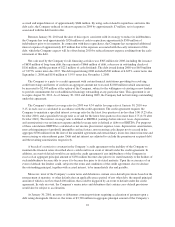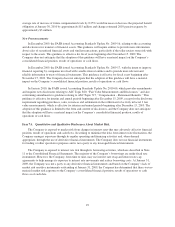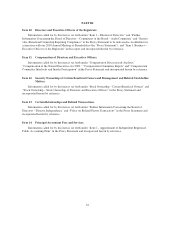Macy's 2009 Annual Report Download - page 29
Download and view the complete annual report
Please find page 29 of the 2009 Macy's annual report below. You can navigate through the pages in the report by either clicking on the pages listed below, or by using the keyword search tool below to find specific information within the annual report.
senior notes outstanding at that date require the Company to offer to purchase such notes at a price equal to 101%
of their principal amount plus accrued and unpaid interest in specified circumstances involving both a change of
control (as defined in the applicable indenture) of the Company and the rating of the notes by specified rating
agencies at a level below investment grade.
The rate of interest payable in respect of $650 million in aggregate principal amount of the Company’s
senior notes outstanding at January 30, 2010 was increased by one percent per annum in April 2009 as a result of
a downgrade of the notes by specified rating agencies. The rate of interest payable in respect of these senior notes
could increase or decrease by up to one percent per annum from its current level in the event of one or more
downgrades or upgrades of the notes by specified rating agencies.
During 2009, the Company repurchased no shares of its common stock under its share repurchase program.
The Company’s share repurchase program is currently suspended. As of January 30, 2010, the Company had
approximately $850 million of authorization remaining under its share repurchase program. The Company may
continue or, from time to time, suspend repurchases of shares under its share repurchase program, depending on
prevailing market conditions, alternate uses of capital and other factors.
On February 19, 2010, the Company’s board of directors declared a quarterly dividend of 5 cents per share
on its common stock, payable April 1, 2010 to Macy’s shareholders of record at the close of business on
March 15, 2010.
At January 30, 2010, the Company had contractual obligations (within the scope of Item 303(a)(5) of
Regulation S-K) as follows:
Obligations Due, by Period
Total
Less than
1 Year
1–3
Years
3–5
Years
More than
5 Years
(millions)
Short-term debt ..................................... $ 238 $ 238 $ – $ – $ –
Long-term debt ..................................... 8,156 – 2,325 646 5,185
Interest on debt ..................................... 5,792 566 993 783 3,450
Capital lease obligations .............................. 54 7 12 7 28
Other long-term liabilities ............................ 1,341 20 361 253 707
Operating leases .................................... 2,530 228 407 328 1,567
Letters of credit ..................................... 52 52 – – –
Other obligations ................................... 2,297 1,949 258 90 –
$20,460 $3,060 $4,356 $2,107 $10,937
“Other obligations” in the foregoing table consist primarily of merchandise purchase obligations and
obligations under outsourcing arrangements, construction contracts, employment contracts, group medical/dental/
life insurance programs, energy and other supply agreements identified by the Company and liabilities for
unrecognized tax benefits that the Company expects to settle in cash in the next year. The Company’s
merchandise purchase obligations fluctuate on a seasonal basis, typically being higher in the summer and early
fall and being lower in the late winter and early spring. The Company purchases a substantial portion of its
merchandise inventories and other goods and services otherwise than through binding contracts. Consequently,
the amounts shown as “Other obligations” in the foregoing table do not reflect the total amounts that the
Company would need to spend on goods and services in order to operate its businesses in the ordinary course.
The Company has not included in the contractual obligations table approximately $193 million for long-
term liabilities for unrecognized tax benefits for various tax positions taken or approximately $71 million of
related accrued federal, state and local interest and penalties. These liabilities may increase or decrease over time
23






